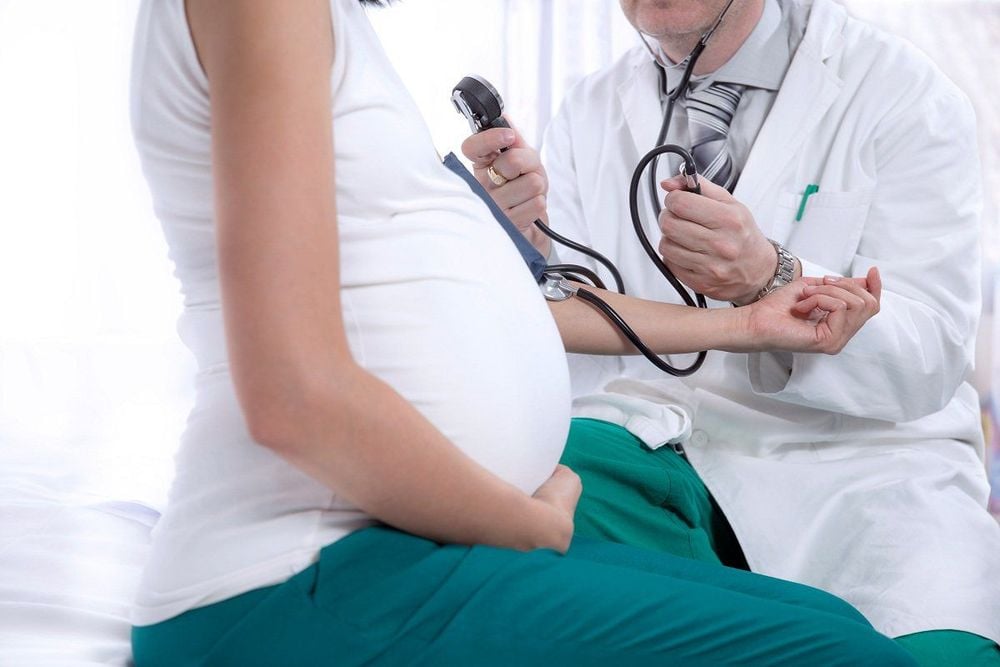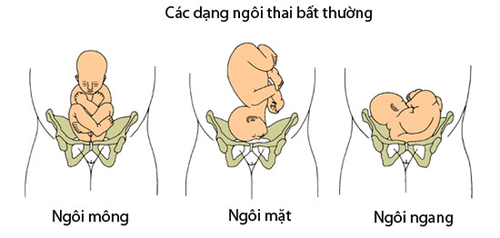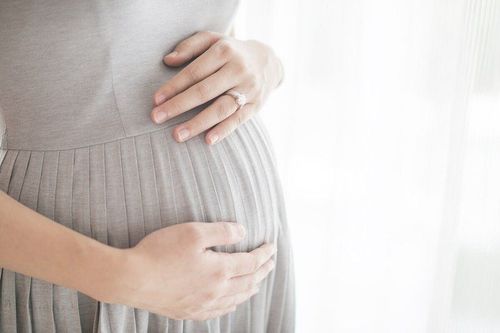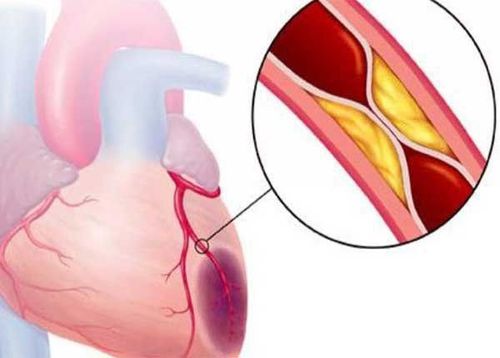This is an automatically translated article.
During pregnancy, a woman will have different changes, along with complications that can be dangerous for both mother and fetus. Determining the diagnosis and pregnancy care for high-risk women during pregnancy is essential to ensure the safety and health of both mother and child.
1. What is a high-risk pregnancy?
A high-risk pregnancy is a high-risk pregnancy with problems before, during, or after delivery that requires more careful monitoring than a normal pregnancy.
Although a high-risk pregnancy has the potential for complications, with early and regular care, high-risk pregnancy care can stay healthy and the baby thrive.
2. Signs and symptoms of high-risk pregnancy
Vaginal bleeding occurs Vaginal discharge with an unpleasant color or odor Abdominal cramps

Đau quặn bụng là triệu chứng của thai nghén có nguy cơ cao
Urinary tract infection – burning or pain when urinating Headache, blurred vision, fainting or very dizzy Fever A change in the baby's movements.
3. Factors affecting high-risk pregnancy
3.1 Factors related to pregnant women Reproductive age:
If a pregnant woman is under 16 years old, she will be at risk of having a difficult birth, premature birth, and the rate of infant mortality during pregnancy. perinatal is quite high. If pregnant women are over 35 years old, they will also be at risk of having a difficult birth, chromosomal disorders, birth defects and a high infant mortality rate. Condition:
Too fat or too thin, height less than 1m45 A woman's condition during pregnancy also affects. If a woman is too fat over 70kg or too thin under 40kg, it creates a risk factor for the mother during labor. 3.2 Factors associated with pre-existing maternal illness Pregnant women with high blood pressure: High blood pressure increases the risk of death for both the mother and the fetus with pre-eclampsia and eclampsia. Kidney disease increases the risk of chronic hypertension leading to preeclampsia and eclampsia.

Tăng huyết áp là nguyên nhân dẫn đến tiền sản giật và sản giật thai kỳ
Heart disease, especially heart disease with complications, will also cause high mortality for both mother and child. Endocrine diseases such as: Basedow, diabetes can easily cause complications for the mother and the fetus such as making the fetus large, malnourished, and stillborn. 3.3 Risk factors due to a pregnant woman with a heavy pregnancy history If the mother has a heavy pregnancy history, it also has a large impact on the pregnancy including: Repeated miscarriages due to genetic abnormalities of both spouses husband, endocrine insufficiency, abnormalities in the uterus,...
3.4 Risk factors due to abnormalities arising during pregnancy Pregnant women have diseases such as: Malaria, anemia, autoimmune thrombocytopenia immunity during pregnancy, gestational kidney disease, gestational hypertension, gestational diabetes, fever due to systemic disease, urinary infection. Fetal: Fetal abnormality, large fetus, abnormal fetus, malnourished fetus, stillbirth, twin pregnancy, multiple pregnancy.

Thai nhi bị ngôi thai bất thường phát sinh trong thai kỳ
4. High-risk pregnancy care
Here's a mother's essentials to care for, check for, and monitor a high-risk pregnancy along with some tips to keep you and your baby as safe and healthy as possible.
4.1 Screening, subclinical tests Obstetricians always ask pregnant women to go for regular check-ups on time, corresponding to important milestones to check and screen for possible risks as soon as possible. to help mothers have a healthy pregnancy. Periodic antenatal check-up is carried out with all the prescribed contents such as: Routine testing of blood group, complete blood count, urine...
4.2 Evaluation of fetus in labor and care of high-risk fetus During pregnancy during labor, the doctor needs to assess the risk of the fetus based on the fetal heart rate; fetal heart rate and uterine contractions on monitoring machines such as: DIP I, DIP II, variable DIP...; status of meconium, nature of amniotic fluid. Regular check-ups as directed by the doctor Monitoring and taking care of high-risk pregnancies are important and necessary to ensure a safe and healthy pregnancy and delivery for both mother and fetus. .
Vinmec International General Hospital now has screening packages, taking care of mother and baby during pregnancy until the baby is born.
Please dial HOTLINE for more information or register for an appointment HERE. Download MyVinmec app to make appointments faster and to manage your bookings easily.













